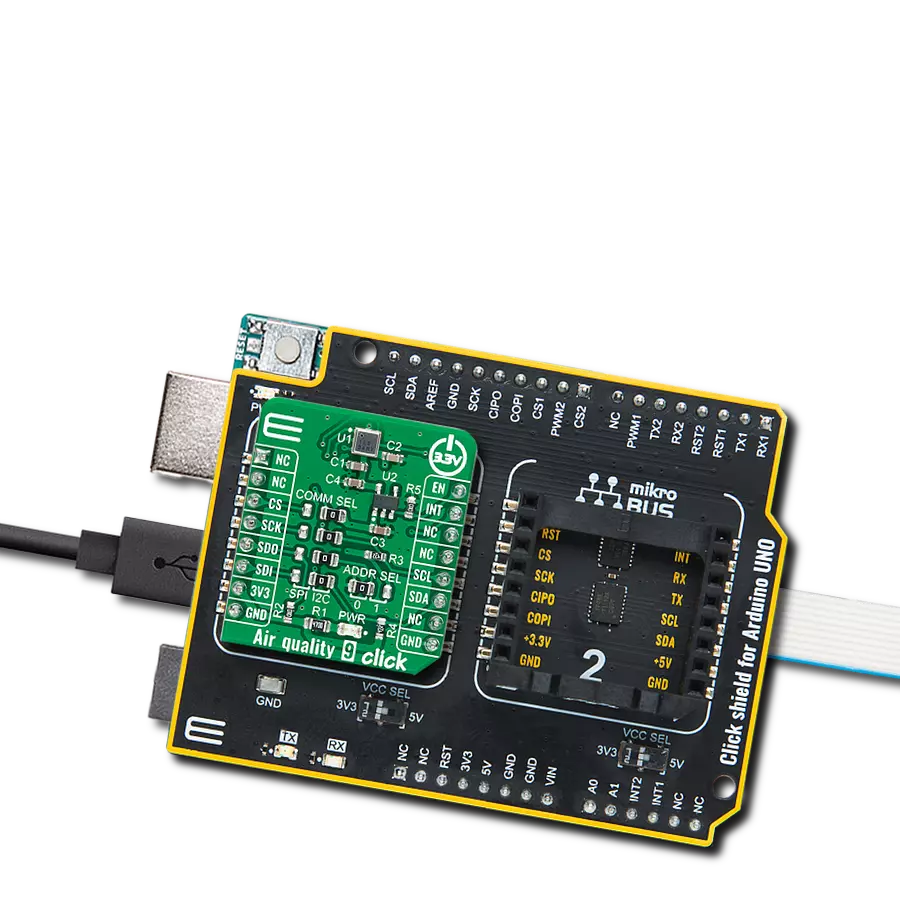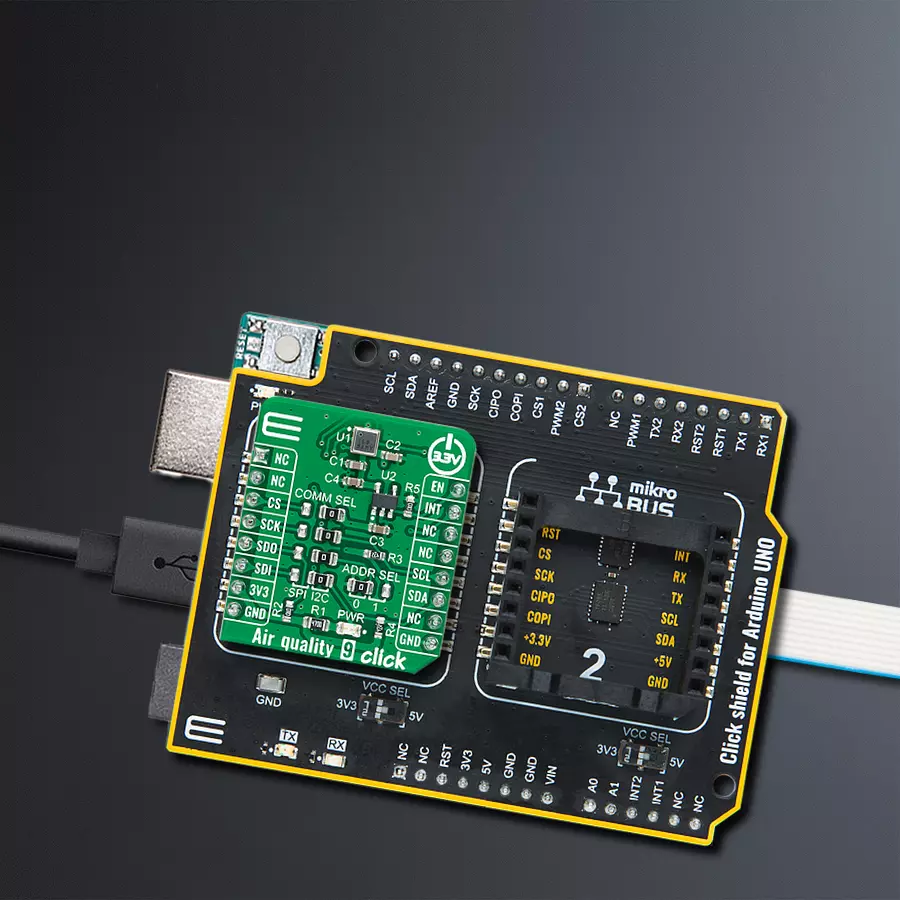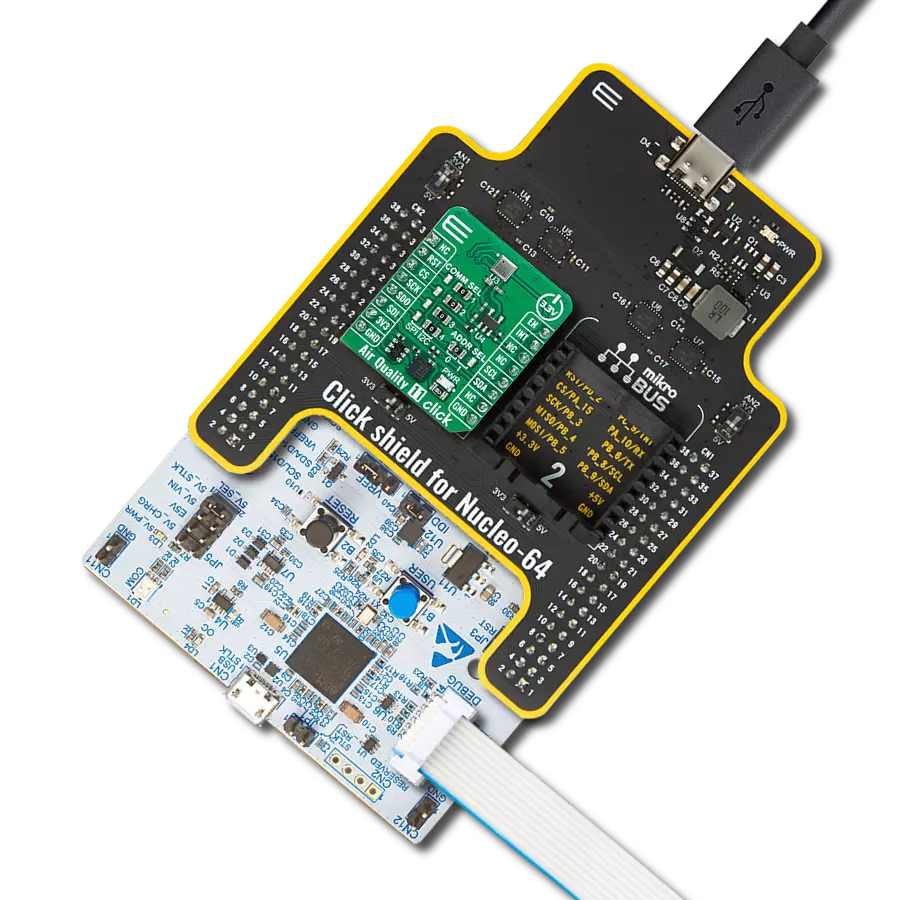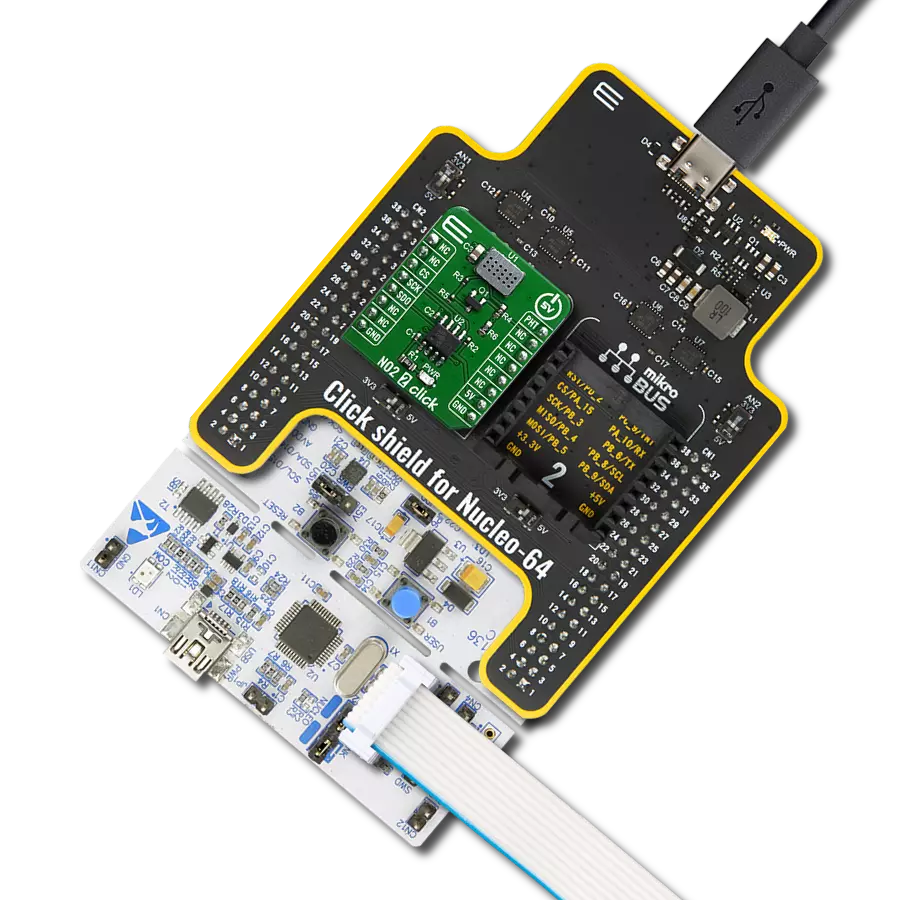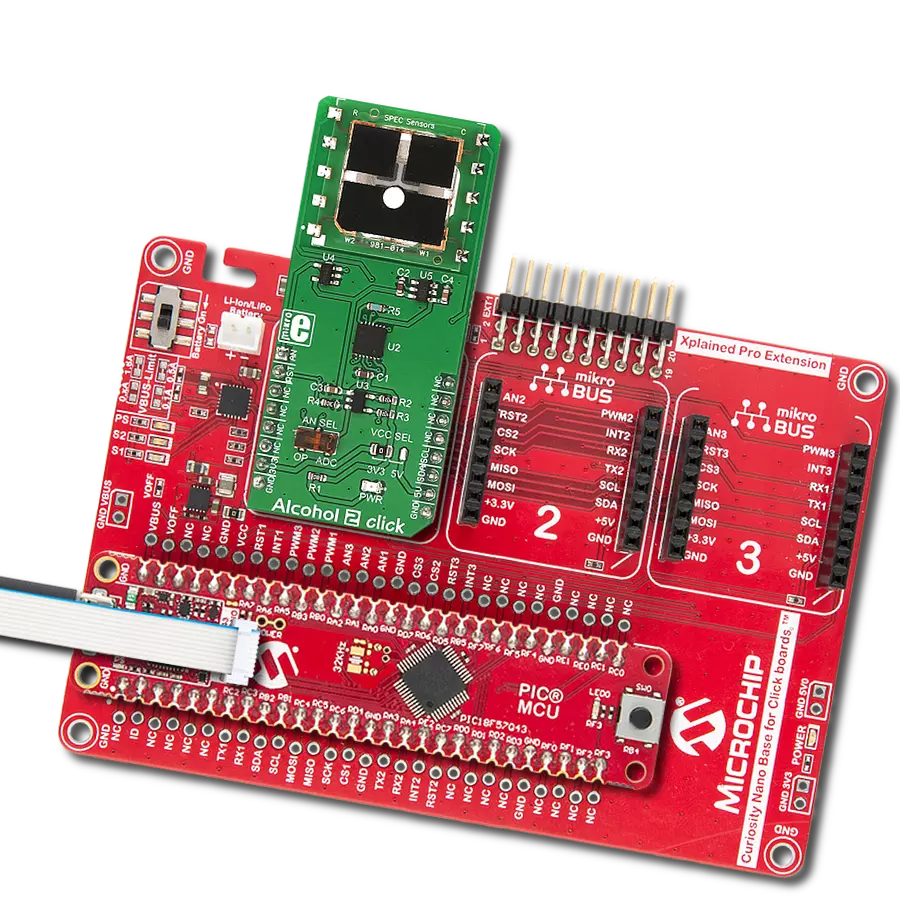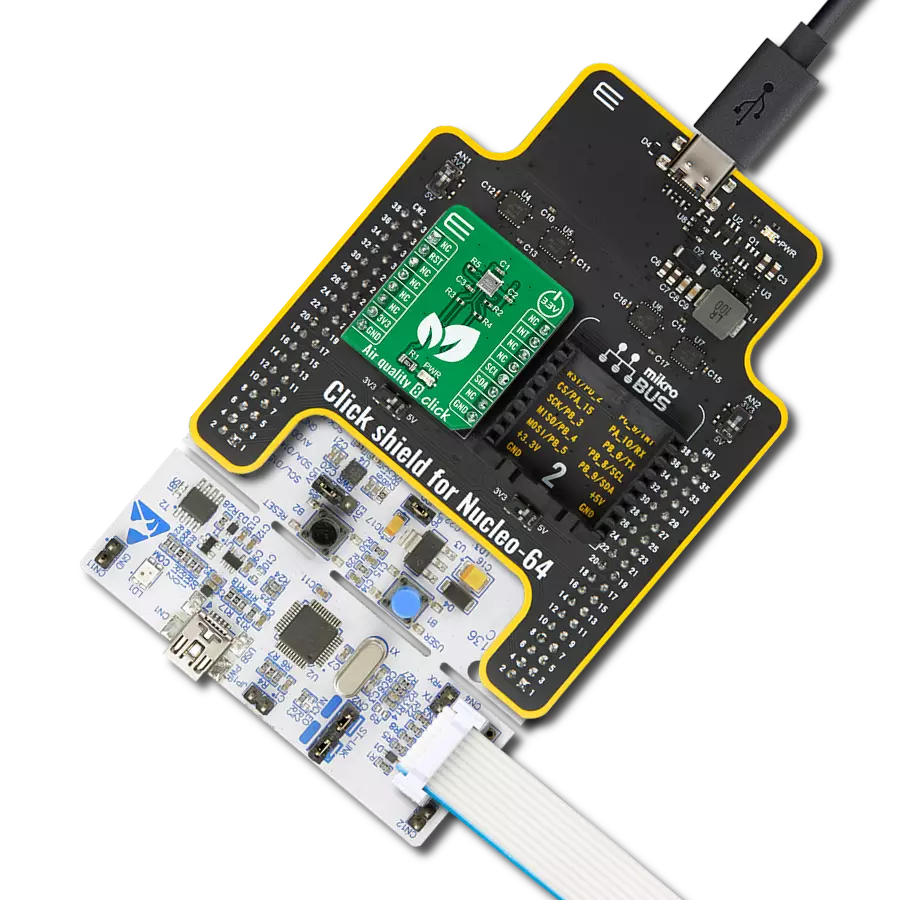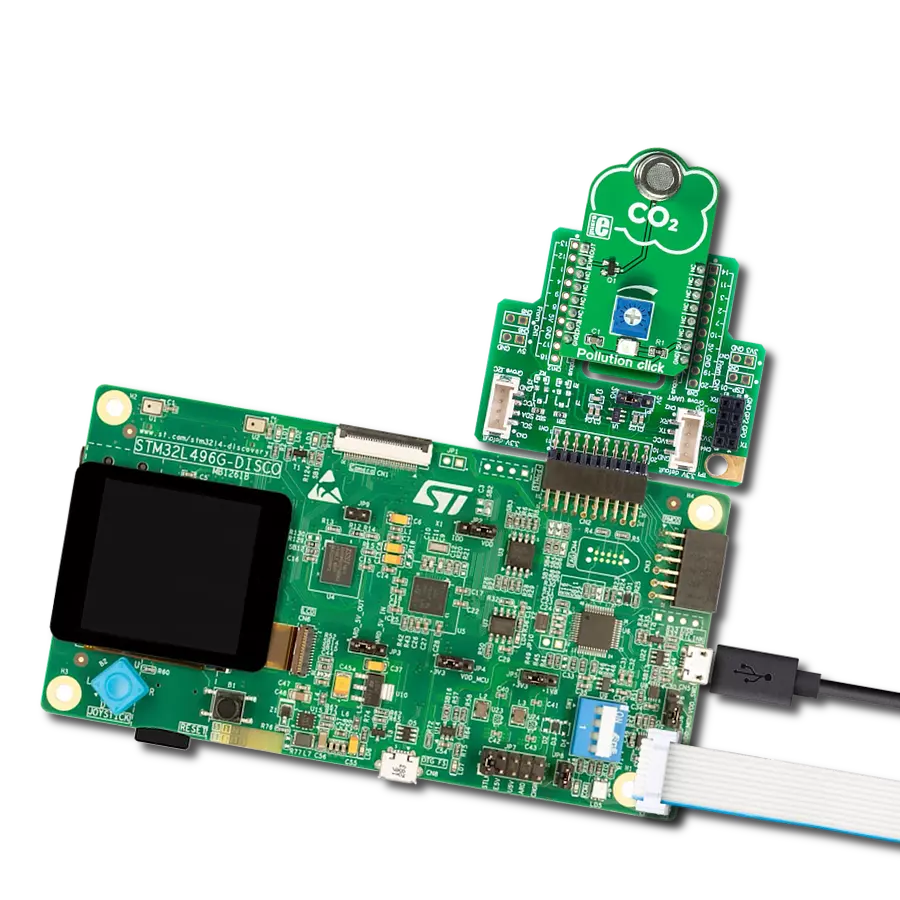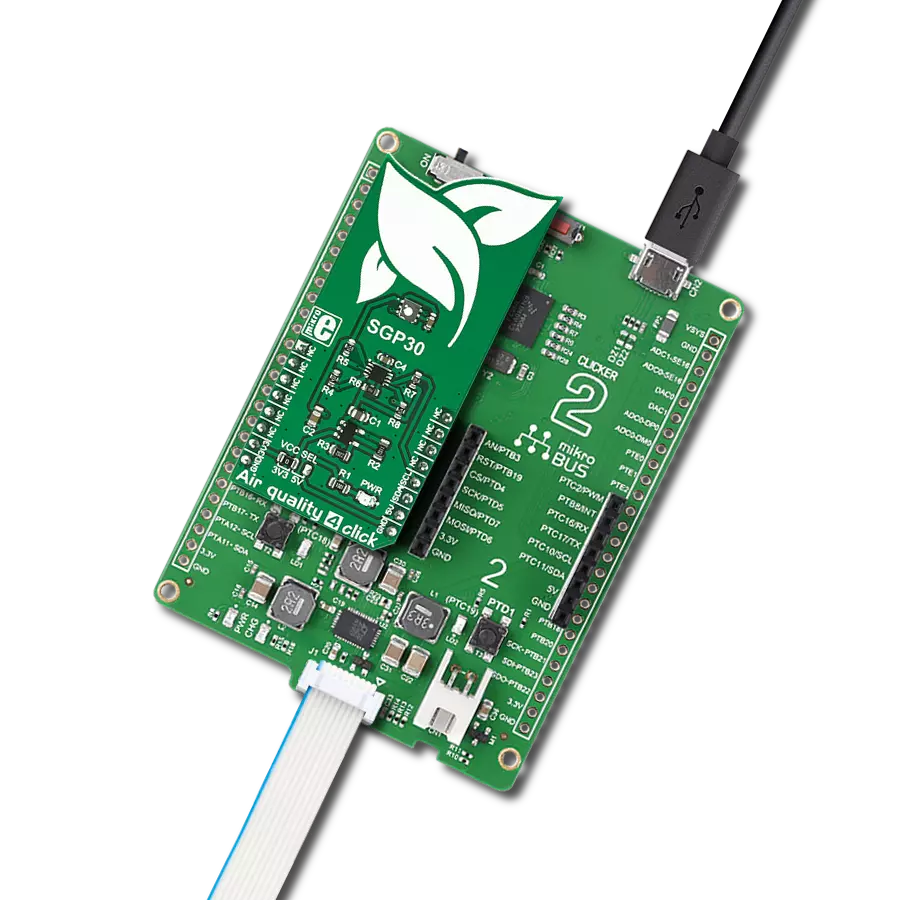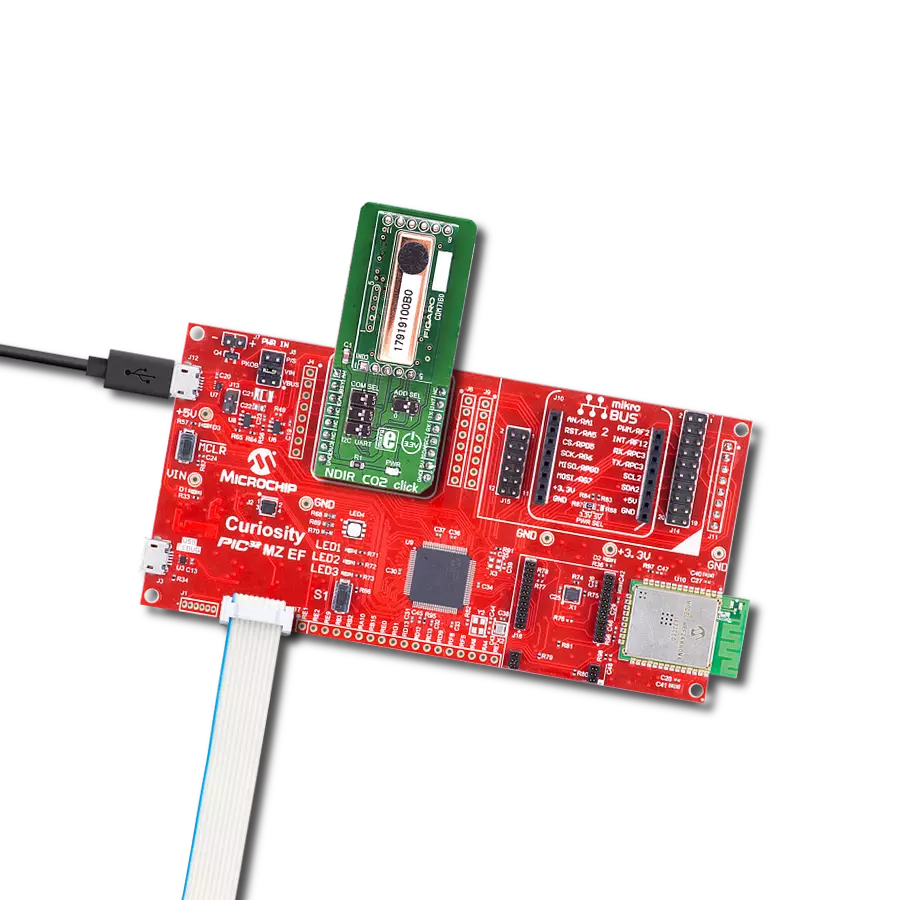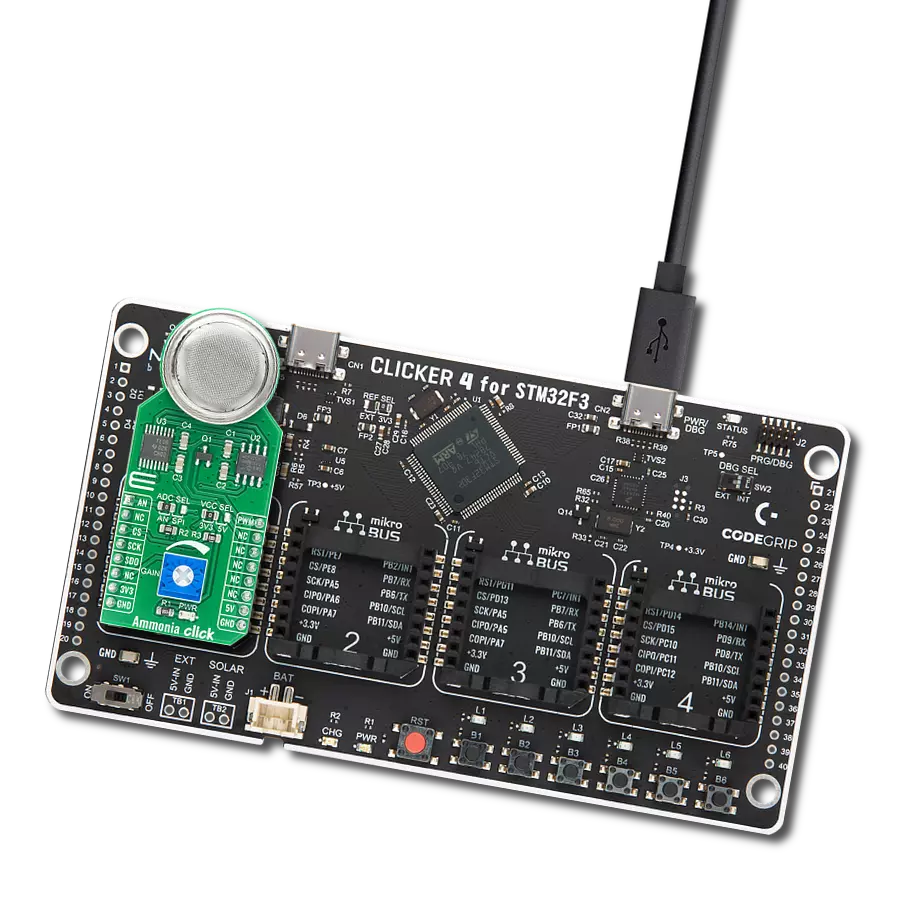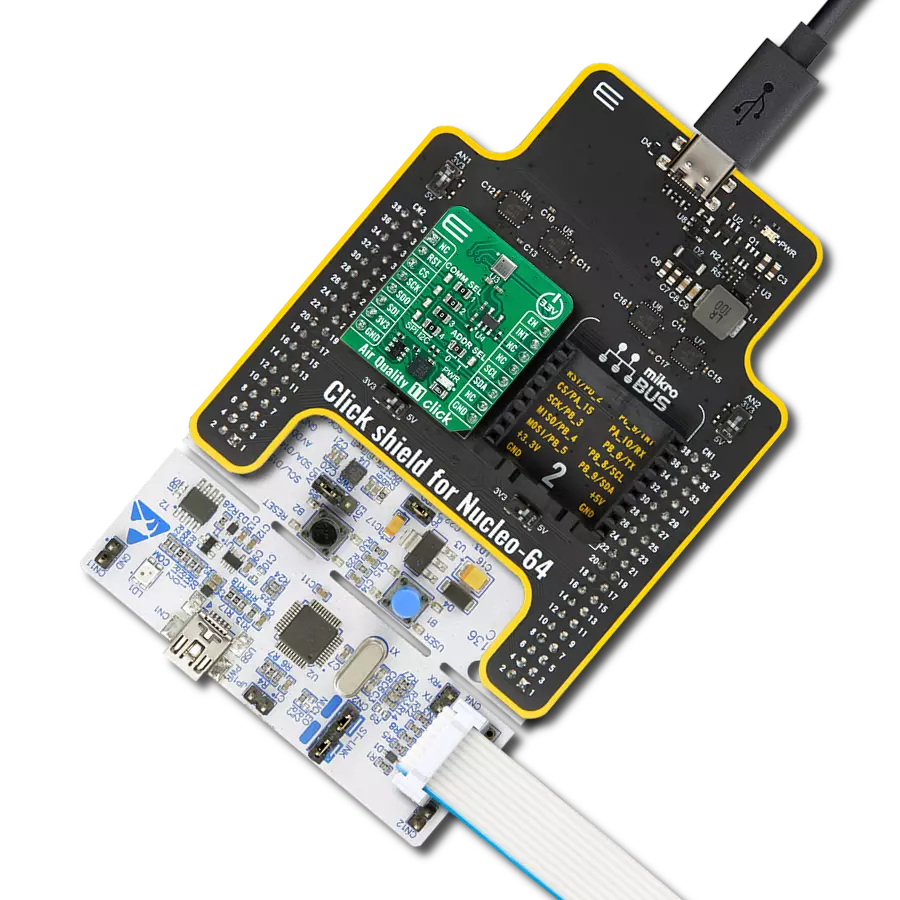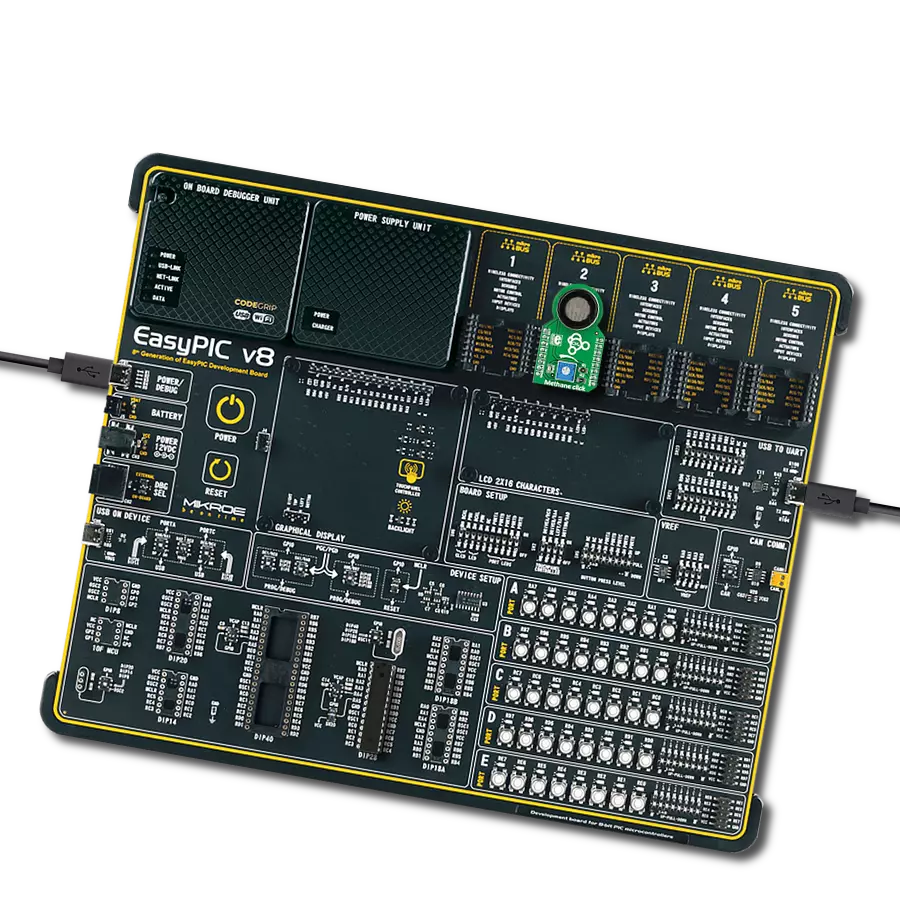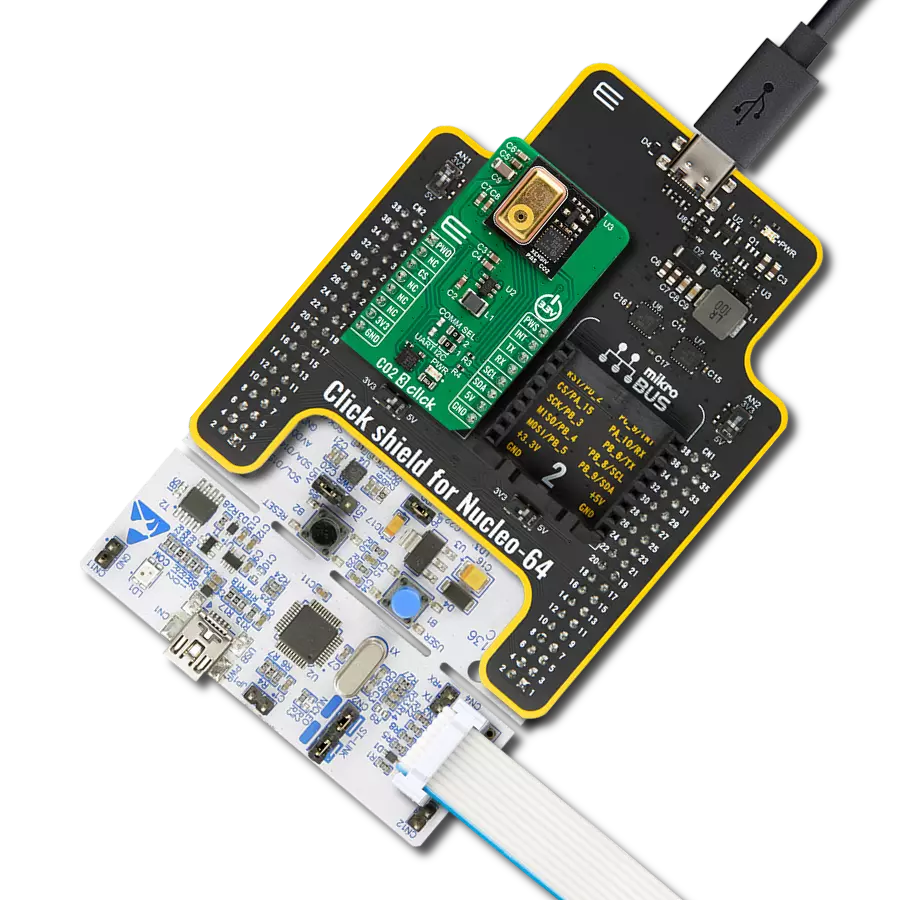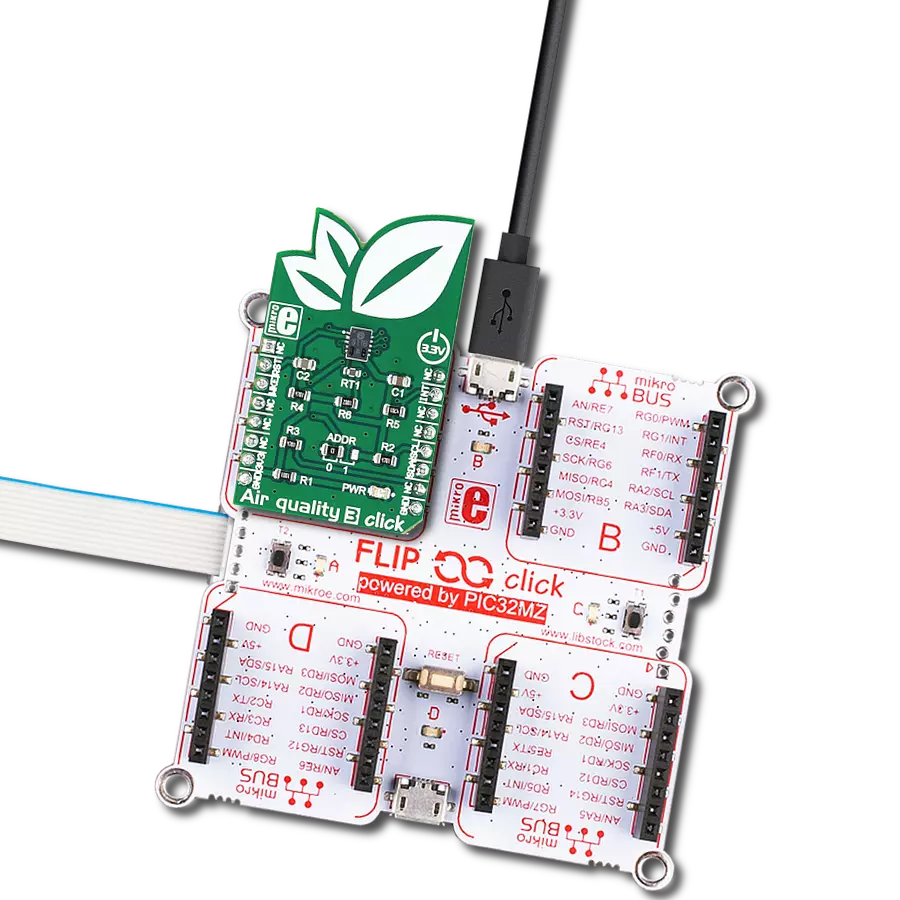Best-in-class air-quality sensing solution
A
A
Hardware Overview
How does it work?
Air quality 9 Click is based on the ENS160, an indoor air quality sensor based on metal oxide (MOX) technology with four MOx sensor elements from ScioSense. This sensor has sophisticated fusion algorithms to produce measurement outputs better tuned to human occupants' natural responses. The multi-element TrueVOC™ technology, on which the ENS160 is based, is sensitive to oxidizing gases such as ozone which affect the quality of indoor air, as well as to a wide range of volatile organic compounds (VOCs) such as ethanol, toluene, as well as hydrogen and nitrogen dioxide with superior selectivity and accuracy. The ENS160 complies with worldwide Indoor Air Quality (IAQ) signal standards and is designed for high volume and reliability. For best performance, the sensor must be operated in normal indoor air at -5 to 60°C (typical: 25°C), while relative humidity ranges
from 20 to 80%RH (typical: 50%RH), non-condensing with no aggressive or poisonous gases present. Prolonged exposure to environments outside these conditions can affect the performance and lifetime of the sensor. This Click board™ allows using both I2C and SPI interfaces with a maximum frequency of 1MHz for I2C and 10MHz for SPI communication. The selection can be made by positioning SMD jumpers labeled COMM SEL appropriately. Note that all the jumpers' positions must be on the same side, or the Click board™ may become unresponsive. While the I2C interface is selected, the ENS160 allows choosing the least significant bit (LSB) of its I2C slave address using the SMD jumper labeled ADDR SEL. This Click board™ also possesses an additional interrupt signal, routed on the INT pin of the mikroBUS™ socket labeled as INT, indicating
the status of the measurement process itself. The ENS160 also requires a supply voltage of 1.8V to work regularly. Therefore, a small LDO regulator, AP2112 from Diodes Incorporated, provides a 1.8V out of mikroBUS™ 3V3 power rail. This LDO can be enabled or disabled through the EN pin routed to the PWM pin of the mikroBUS™ socket, hence, offering a switch operation to turn ON/OFF power delivery to the ENS160. This Click board™ can only be operated with a 3.3V logic voltage level. The board must perform appropriate logic voltage level conversion before using MCUs with different logic levels. However, the Click board™ comes equipped with a library containing functions and an example code that can be used as a reference for further development.
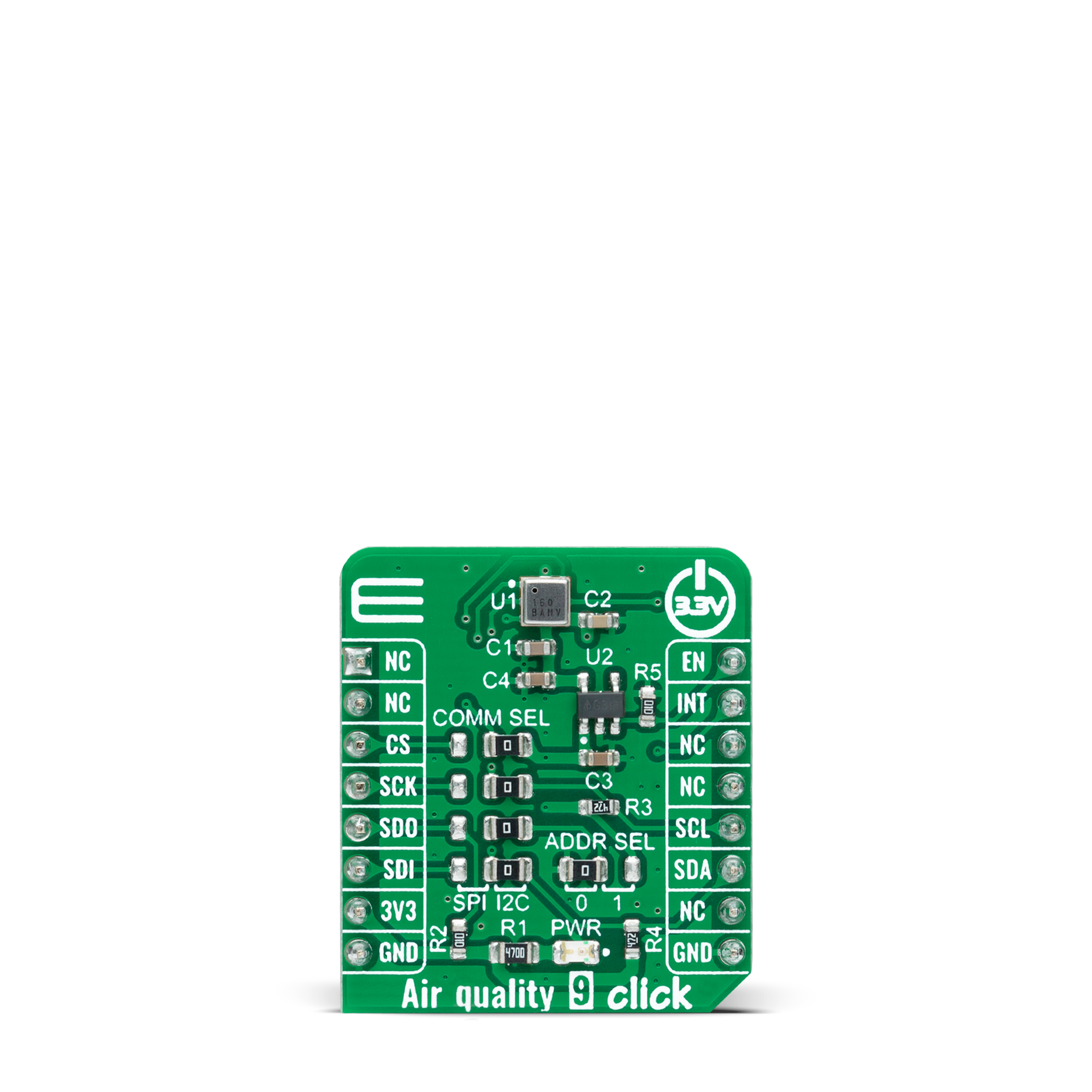
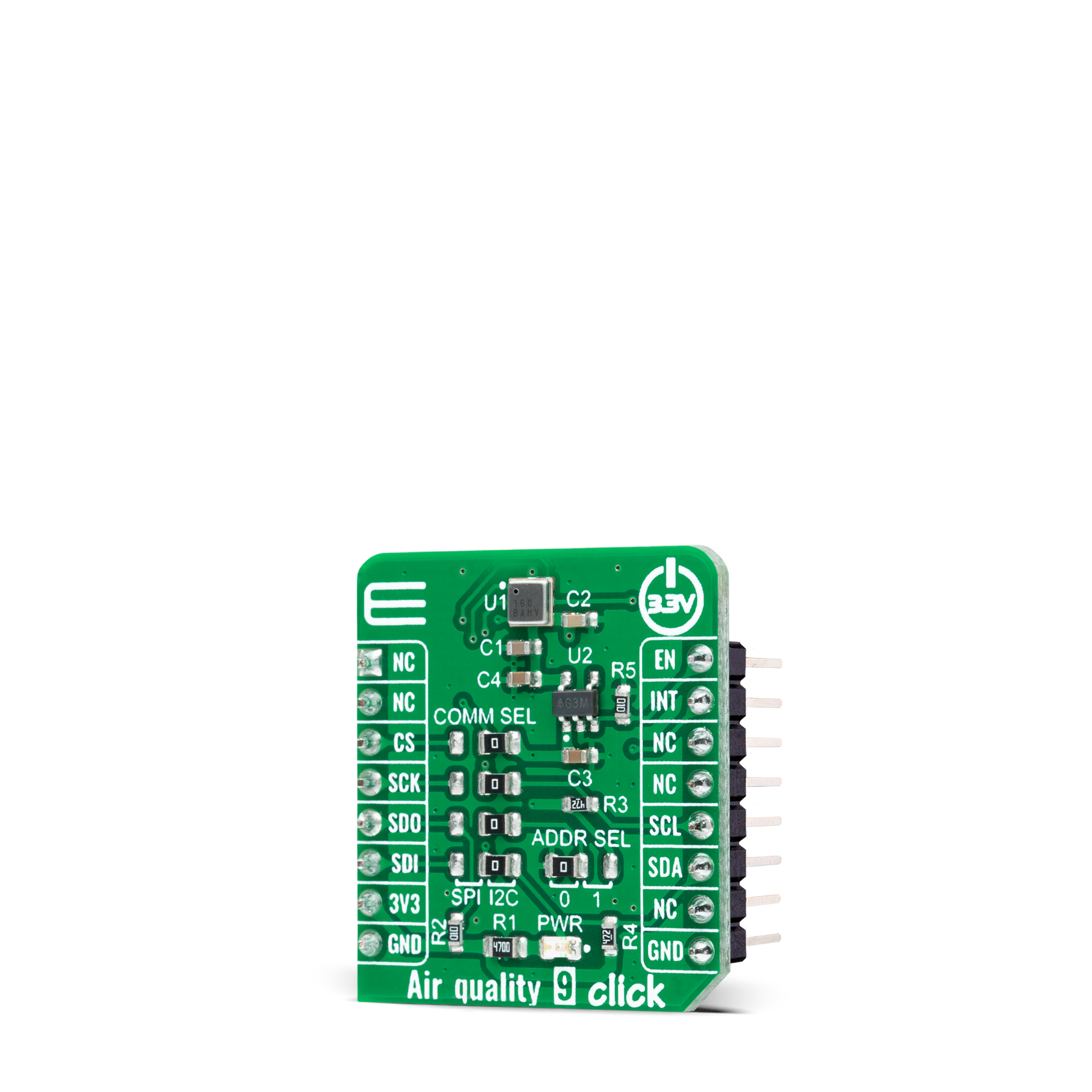
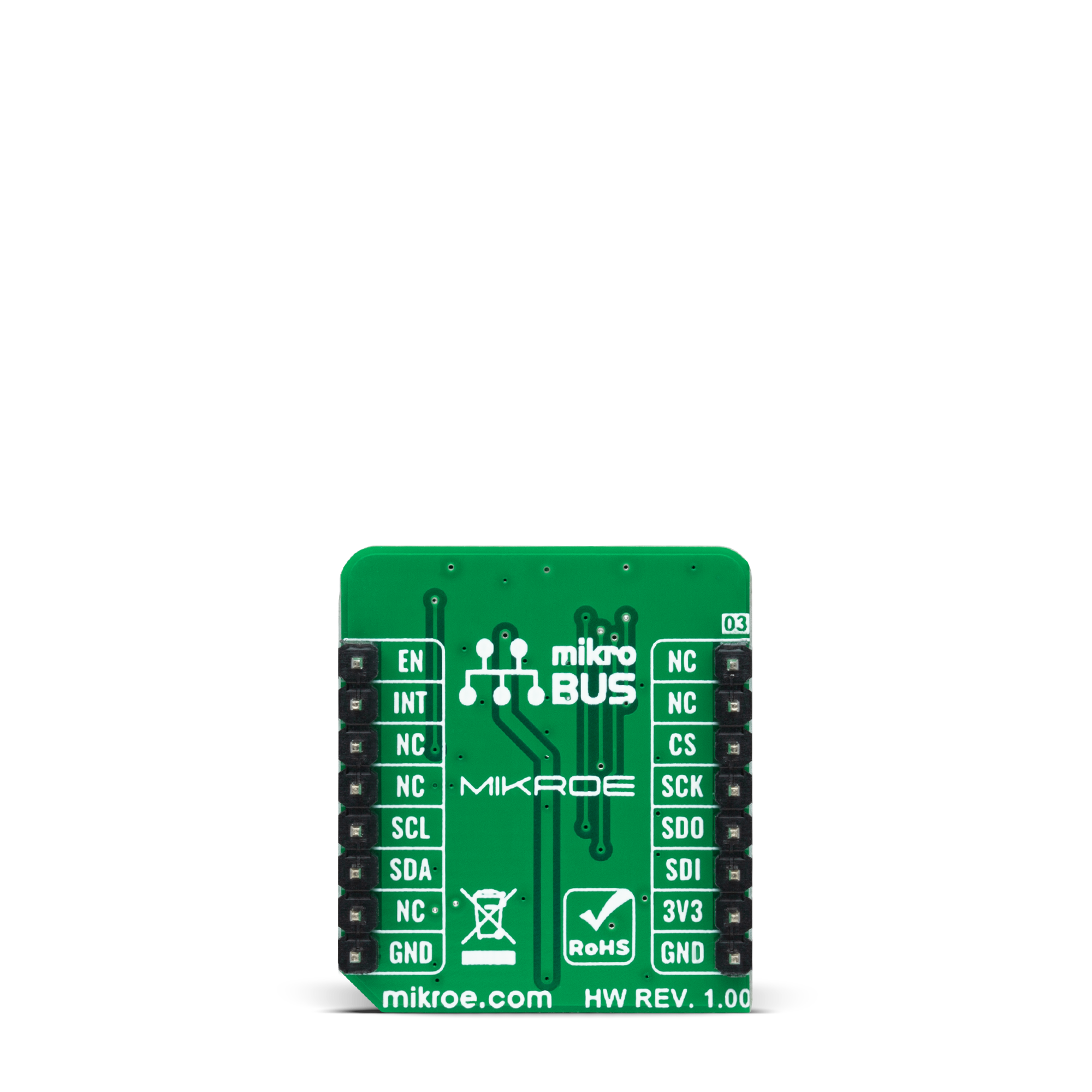
Features overview
Development board
Arduino UNO is a versatile microcontroller board built around the ATmega328P chip. It offers extensive connectivity options for various projects, featuring 14 digital input/output pins, six of which are PWM-capable, along with six analog inputs. Its core components include a 16MHz ceramic resonator, a USB connection, a power jack, an
ICSP header, and a reset button, providing everything necessary to power and program the board. The Uno is ready to go, whether connected to a computer via USB or powered by an AC-to-DC adapter or battery. As the first USB Arduino board, it serves as the benchmark for the Arduino platform, with "Uno" symbolizing its status as the
first in a series. This name choice, meaning "one" in Italian, commemorates the launch of Arduino Software (IDE) 1.0. Initially introduced alongside version 1.0 of the Arduino Software (IDE), the Uno has since become the foundational model for subsequent Arduino releases, embodying the platform's evolution.
Microcontroller Overview
MCU Card / MCU

Architecture
AVR
MCU Memory (KB)
32
Silicon Vendor
Microchip
Pin count
28
RAM (Bytes)
2048
You complete me!
Accessories
Click Shield for Arduino UNO has two proprietary mikroBUS™ sockets, allowing all the Click board™ devices to be interfaced with the Arduino UNO board without effort. The Arduino Uno, a microcontroller board based on the ATmega328P, provides an affordable and flexible way for users to try out new concepts and build prototypes with the ATmega328P microcontroller from various combinations of performance, power consumption, and features. The Arduino Uno has 14 digital input/output pins (of which six can be used as PWM outputs), six analog inputs, a 16 MHz ceramic resonator (CSTCE16M0V53-R0), a USB connection, a power jack, an ICSP header, and reset button. Most of the ATmega328P microcontroller pins are brought to the IO pins on the left and right edge of the board, which are then connected to two existing mikroBUS™ sockets. This Click Shield also has several switches that perform functions such as selecting the logic levels of analog signals on mikroBUS™ sockets and selecting logic voltage levels of the mikroBUS™ sockets themselves. Besides, the user is offered the possibility of using any Click board™ with the help of existing bidirectional level-shifting voltage translators, regardless of whether the Click board™ operates at a 3.3V or 5V logic voltage level. Once you connect the Arduino UNO board with our Click Shield for Arduino UNO, you can access hundreds of Click boards™, working with 3.3V or 5V logic voltage levels.
Used MCU Pins
mikroBUS™ mapper
Take a closer look
Click board™ Schematic

Step by step
Project assembly
Software Support
Library Description
This library contains API for Air quality 9 Click driver.
Key functions:
airquality9_read_aqi_ubaThis function reads the Air quality Index per UBA (AQI-UBA).airquality9_read_tvocThis function reads the calculated Total Volatile Organic Compounds (TVOC) concentration per ppb.airquality9_read_eco2This function reads the calculated Equivalent CO2 (eCO2) concentration per ppm.
Open Source
Code example
The complete application code and a ready-to-use project are available through the NECTO Studio Package Manager for direct installation in the NECTO Studio. The application code can also be found on the MIKROE GitHub account.
/*!
* @file main.c
* @brief AirQuality9 Click example
*
* # Description
* This example demonstrates the use of Air Quality 9 Click board by reading and displaying
* outputs such as eCO2, TVOC and AQI in compliance with worldwide IAQ standards.
*
* The demo application is composed of two sections :
*
* ## Application Init
* Initializes the driver and logger and performs the Click default configuration.
*
* ## Application Task
* Waits for the new data interrupt which triggers once per second,
* and then reads the validity status, TVOC, eCO2, and AQI-UBA values.
* All values are being displayed on the USB UART where you can track their changes.
*
* @author Stefan Filipovic
*
*/
#include "board.h"
#include "log.h"
#include "airquality9.h"
static airquality9_t airquality9;
static log_t logger;
/**
* @brief Air Quality 9 display status validity function.
* @details This function parses the status validity from status byte and displays it on the USB UART.
* @param[in] status : Data status byte.
* @return None.
* @note None.
*/
void airquality9_display_status_validity ( uint8_t status );
/**
* @brief Air Quality 9 display aqi uba function.
* @details This function parses the Air Quality Index per UBA (AQI-UBA) value and displays it on the USB UART.
* @param[in] aqi_uba : AQI-UBA value.
* @return None.
* @note None.
*/
void airquality9_display_aqi_uba ( uint8_t aqi_uba );
void application_init ( void )
{
log_cfg_t log_cfg; /**< Logger config object. */
airquality9_cfg_t airquality9_cfg; /**< Click config object. */
/**
* Logger initialization.
* Default baud rate: 115200
* Default log level: LOG_LEVEL_DEBUG
* @note If USB_UART_RX and USB_UART_TX
* are defined as HAL_PIN_NC, you will
* need to define them manually for log to work.
* See @b LOG_MAP_USB_UART macro definition for detailed explanation.
*/
LOG_MAP_USB_UART( log_cfg );
log_init( &logger, &log_cfg );
log_info( &logger, " Application Init " );
// Click initialization.
airquality9_cfg_setup( &airquality9_cfg );
AIRQUALITY9_MAP_MIKROBUS( airquality9_cfg, MIKROBUS_1 );
err_t init_flag = airquality9_init( &airquality9, &airquality9_cfg );
if ( ( I2C_MASTER_ERROR == init_flag ) || ( SPI_MASTER_ERROR == init_flag ) )
{
log_error( &logger, " Communication init." );
for ( ; ; );
}
if ( AIRQUALITY9_ERROR == airquality9_default_cfg ( &airquality9 ) )
{
log_error( &logger, " Default configuration." );
for ( ; ; );
}
log_info( &logger, " Application Task " );
}
void application_task ( void )
{
if ( airquality9_get_int_pin ( &airquality9 ) )
{
uint8_t status, aqi_uba;
uint16_t tvoc, eco2;
if ( AIRQUALITY9_OK == airquality9_read_status ( &airquality9, &status ) )
{
airquality9_display_status_validity ( status );
}
if ( AIRQUALITY9_OK == airquality9_read_tvoc ( &airquality9, &tvoc ) )
{
log_printf ( &logger, " TVOC: %u ppb\r\n", tvoc );
}
if ( AIRQUALITY9_OK == airquality9_read_eco2 ( &airquality9, &eco2 ) )
{
log_printf ( &logger, " ECO2: %u ppm\r\n", eco2 );
}
if ( AIRQUALITY9_OK == airquality9_read_aqi_uba ( &airquality9, &aqi_uba ) )
{
airquality9_display_aqi_uba ( aqi_uba );
}
}
}
int main ( void )
{
/* Do not remove this line or clock might not be set correctly. */
#ifdef PREINIT_SUPPORTED
preinit();
#endif
application_init( );
for ( ; ; )
{
application_task( );
}
return 0;
}
void airquality9_display_status_validity ( uint8_t status )
{
switch ( status & AIRQUALITY_STATUS_VALID_FLAG_BITS )
{
case AIRQUALITY_STATUS_VALID_NORMAL_OP:
{
log_printf ( &logger, " Status: Normal operation\r\n" );
break;
}
case AIRQUALITY_STATUS_VALID_WARM_UP:
{
log_printf ( &logger, " Status: Warm-Up phase\r\n" );
break;
}
case AIRQUALITY_STATUS_VALID_INIT_START_UP:
{
log_printf ( &logger, " Status: Initial Start-Up phase\r\n" );
break;
}
case AIRQUALITY_STATUS_VALID_INVALID:
{
log_printf ( &logger, " Status: Invalid output\r\n" );
break;
}
}
}
void airquality9_display_aqi_uba ( uint8_t aqi_uba )
{
switch ( aqi_uba )
{
case AIRQUALITY9_AQI_UBA_EXELLENT:
{
log_printf ( &logger, " AQI-UBA Rating: Exellent\r\n" );
log_printf ( &logger, " Recommendation: Target\r\n" );
log_printf ( &logger, " Exposure Limit: No limit\r\n\n" );
break;
}
case AIRQUALITY9_AQI_UBA_GOOD:
{
log_printf ( &logger, " AQI-UBA Rating: Good\r\n" );
log_printf ( &logger, " Recommendation: Sufficient ventilation\r\n" );
log_printf ( &logger, " Exposure Limit: No limit\r\n\n" );
break;
}
case AIRQUALITY9_AQI_UBA_MODERATE:
{
log_printf ( &logger, " AQI-UBA Rating: Moderate\r\n" );
log_printf ( &logger, " Recommendation: Increased ventilation - Search for sources\r\n" );
log_printf ( &logger, " Exposure Limit: <12 months\r\n\n" );
break;
}
case AIRQUALITY9_AQI_UBA_POOR:
{
log_printf ( &logger, " AQI-UBA Rating: Poor\r\n" );
log_printf ( &logger, " Recommendation: Intensified ventilation - Search for sources\r\n" );
log_printf ( &logger, " Exposure Limit: <1 month\r\n\n" );
break;
}
case AIRQUALITY9_AQI_UBA_UNHEALTHY:
{
log_printf ( &logger, " AQI-UBA Rating: Unhealthy\r\n" );
log_printf ( &logger, " Recommendation: Use only if unavoidable - Intensified ventilation\r\n" );
log_printf ( &logger, " Exposure Limit: No limit\r\n\n" );
break;
}
default:
{
log_printf ( &logger, " AQI-UBA Rating: Unknown\r\n\n" );
break;
}
}
}
// ------------------------------------------------------------------------ END
Additional Support
Resources
Category:Gas
